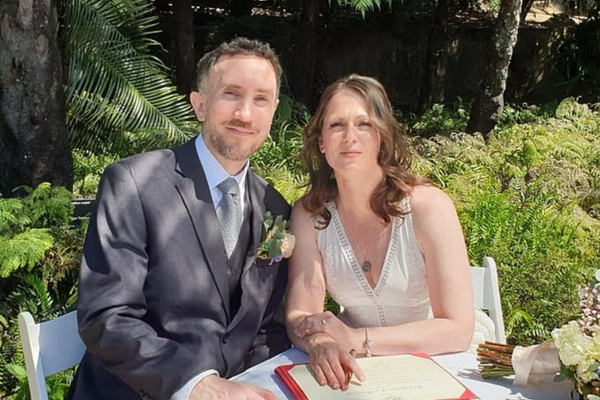Isabella Aiona Abbott became the authority on algae of the Pacific Ocean. But it all started on the beaches of Hawaii as a young girl — helping her mother gather seaweed to cook traditional Hawaiian food.
During their forages, Abbott's Hawaiian mother taught her to identify the varieties of seaweed, a general term for algae. Those lessons enlightened Abbott (1919-2010) to become a leading scientific expert on these plants. Racial and gender discrimination didn't stop her. She became the first native Hawaiian woman to earn a Ph.D. in any field of science. And she opened the way for other women to pursue science degrees.
"My mother knew every limu (the Hawaiian word for a plant from moist environments) that was edible," said Abbott, the pioneering marine botanist, researcher, author and professor on a June 17, 2008 PBS Hawai'i podcast. "(She) never made a mistake. And so when I grew up, I put Latin names with those Hawaiian names. I never made a mistake either."
Rise In Your Field Like Abbott
Abbott rose to be a preeminent scholar in her field. She wrote 150 papers and eight books, many remain the authoritative guides more than 20 years later. They remain in use today as the go-to sources for all types of marine biologists and coral reef ecologists, says Celia Smith, professor of botany at the University of Hawaii at Manoa, who studied under Abbott.
Plus Abbott named more algae species along the Pacific coast than anyone, said Abbott's friend and colleague Stephen Palumbi, professor of marine biology at Stanford University's Hopkins Marine Station. Specifically, she named more than 200 algae species and cataloged cultural uses of limu and Hawaiian medicinal plants. Her work laid the foundation for current research in seaweed and its ecological and economic impact.
Ultimately, Abbott became the first woman and first person of color to become a full professor of biology at Stanford University. Abbott also won accolades for her work, including the Gilbert Morgan Smith Medal from the National Academy of Sciences in 1997.
But success wasn't a birthright.
Add To Your Knowledge Base
Born Isabella Kauakea Yau Yung Aiona in Hana, Maui, Abbott tread on new territory many times to become a pioneer and leader in her field. After earning a Ph.D. in botany from the University of California, Berkeley in 1950, she pursued a career in education. Initially she focused on connecting her scientific research with teaching.
She began her journey at Stanford's Hopkins Marine Station, where she taught from 1960 to 1982. It wasn't an easy path to success. Abbott held a doctorate in botany, but Stanford hired her not on a tenure track but as a lecturer. Abbott had to work hard to prove herself and excel in her work to move up.
Her efforts paid off. In 1972 "her productiveness as a researcher and effectiveness as a teacher were so undeniable that she was hired as a full professor in biology, bypassing the usual steps on the tenure-track ladder of first being an assistant, then associate, professor," said a memorial article in Stanford News.
While at Hopkins, Abbott laid the groundwork for scientific achievements. "Izzie was a force of nature and a force of knowledge and a force of revolution in science," said Palumbi, who met Abbott in 1986. "She (tied) the knowledge between Western science and understanding (of) algae and how they were always used by traditional cultures."
Share Your Knowledge
Abbott didn't just hoard her knowledge. She spread her learning using pen and paper.
Her prolific writing is one reason why "she (was) a preeminent marine botanist, in my humble opinion," said Smith.
How did she Abbott achieve her accomplishments? A quilt hanging in her Honolulu home said it all. Her grandmother made the quilt at the turn of the 19th century. Sewn into the quilt was the flag of the nation of Hawaii. Her grandmother made the blanket when the flag's display was banned following the overthrow of the native Hawaiian government.
That quilt was symbolic. "Izzie came from a long line of Hawaiian women," who resisted the politics of their time, said Palumbi. "She had the spirit of the women before her." Abbott had the spirit of a pioneer.
Stand Up For Yourself
Abbott came from outside the academic establishment. So she had to speak up, but not alienate others. "She had a strong sense of purpose and a backbone that would not allow social circumstances to stand in her way," said Smith. "That set of attitudes was essential to survive."
Her upbringing offered strength and support, says Smith. Abbott had five brothers. That taught her how to deal with competition and make her own way. "Abbott pursued the career path she wanted," said Smith.
Bring Others Along
Just as her grandmother inspired Abbott, she lit up other potential marine botanists with leadership, too.
Palumbi says Abbott combined her "quiet wisdom" with a real zeal for knowing what she was doing. "She melded her scientific knowledge with the cultural knowledge she achieved and she wrote about it," he said. "She was passionate and incredibly hard working and productive. What she did was so novel and new."
Abbott showed others the importance of preserving native Hawaiians' knowledge of seaweeds, plants and plant uses. But she did it her way.
She didn't have the vocal, strident personality some leaders do, says Smith. "She worked behind the scenes to bring people along and to build confidence. Abbott made connections with people that (were) selfless, not self-serving. Still, she wasn't afraid to speak out and be that articulate leader."
Bring Your Expertise To Life
Abbott ran a marine botany class at Hopkins. There she taught a generation of undergraduates and graduates about algae and green plants, says Palumbi. Her lectures were so colorful that she made students have an appreciation for what they were working with.
Abbott retired from Stanford in 1982 and returned to her Hawaii homeland. She later joined the faculty at her alma mater the University of Hawaii at Manoa and served as the G.P. Wilder professor of botany.
Smith says Abbott "poured her soul into teaching." She told stories of how her family used plants in the Hawaiian traditional ways, as the basis of her lectures. These stories captivated audiences of students. She wrote the 1984 book "Limu, an Ethnobotanical Study of Some Hawaiian Seaweeds" based on these stories, which served as the class textbook.
At Manoa, Abbott would take the stage in an auditorium with seating for 75 students. Before class ended 75 more students came in for standing room.
Follow Your Driver
Unlike some other scientists just looking to make a name for themselves, Abbott saw part of her role as legitimizing in a scientific way the collected oceanic wisdom of her Pacific Islander forebearers.
"An inner drive to reconcile the gap between her views of Hawaiian culture and the mainland culture" drove Abbott, said Smith. "She saw the Hawaiian culture as worldly, knowledgeable and sophisticated and she wanted to use every example to counter the views that Hawaiians were not sophisticated. "
Marine Botanist Isabella Iona Abbott's Keys
- Pioneering marine botanist and foremost authority on the algae of the Pacific Ocean basin. The first native Hawaiian woman to earn a Ph.D. in science.
- Overcame: Racial and gender discrimination to pursue a career as a scientist.
- Lesson: "She quietly went about her work in becoming a world famous seaweed biologist (who) continued moving forward with her own vision and with her own views."







